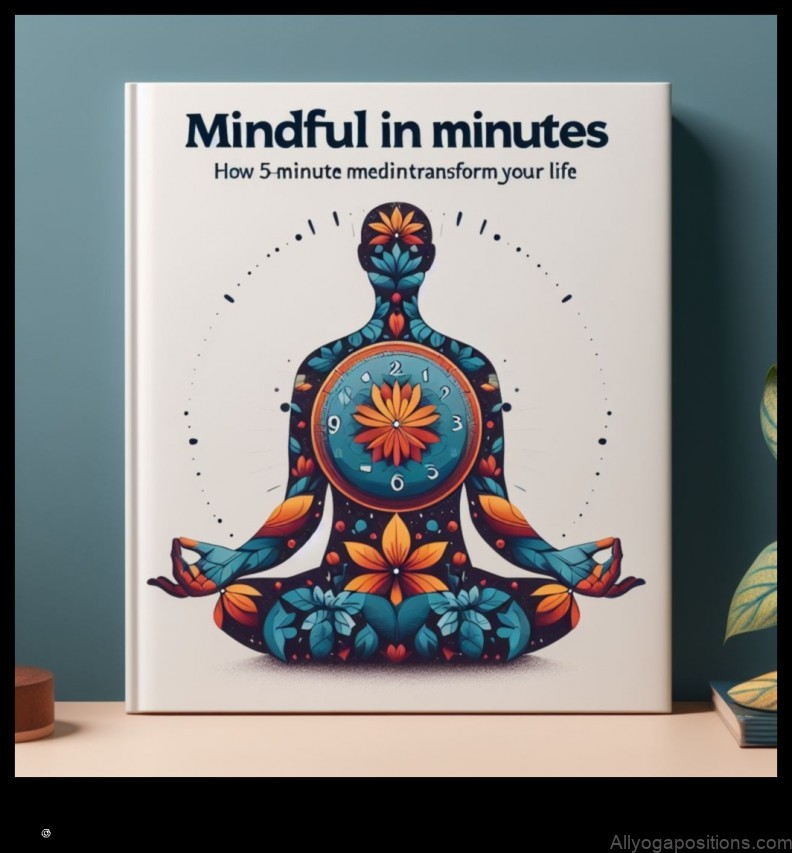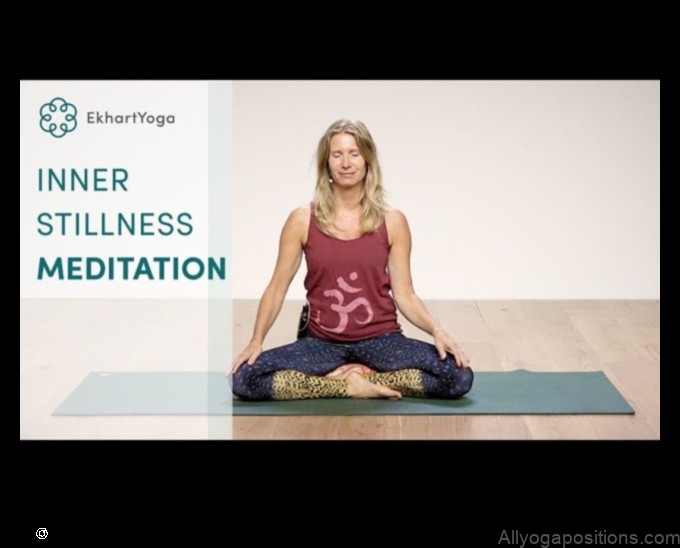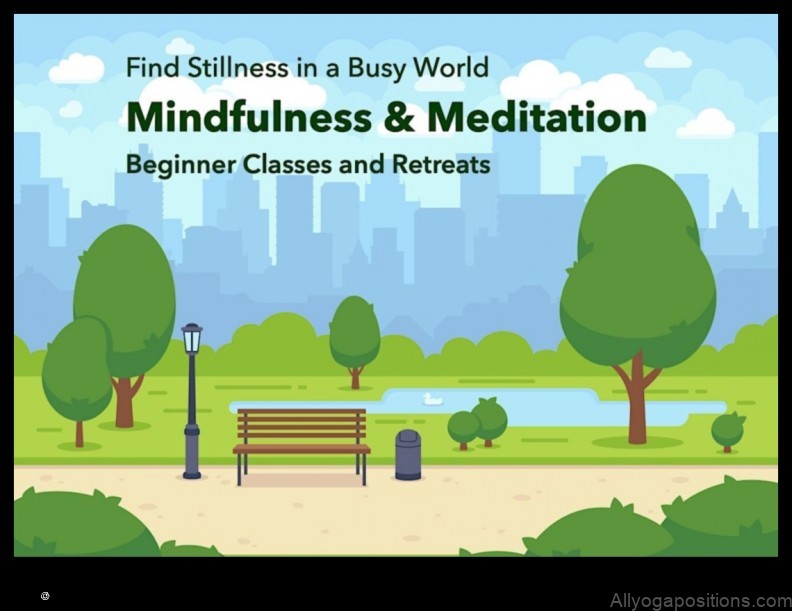
Meditation on the Go: Incorporating Stillness into a Busy Lifestyle
Meditation is a practice that has been shown to have many benefits for both physical and mental health. It can help to reduce stress, improve focus, and increase relaxation. However, it can be difficult to find time to meditate when you have a busy lifestyle.
This article will provide you with tips on how to incorporate stillness into your busy lifestyle. We will discuss what stillness is, why it is important, and how you can start practicing it in your own life.
## What is stillness?
Stillness is a state of being in which you are completely relaxed and at peace. It is a time to let go of all of your thoughts and worries and simply exist in the present moment.
Stillness is not the same as meditation. Meditation is a practice that can help you to achieve stillness, but it is not the same thing. Meditation involves focusing your attention on a single object or thought, while stillness is simply a state of being.
## Why is stillness important?
Stillness is important for a number of reasons. It can help to:
- Reduce stress
- Improve focus
- Increase relaxation
- Boost creativity
- Improve sleep
- Reduce pain
- Promote healing
## How to incorporate stillness into your busy lifestyle
If you are new to meditation or stillness practice, it is important to start slowly and gradually increase the amount of time you spend practicing. Here are a few tips for incorporating stillness into your busy lifestyle:
- Start by setting aside a small amount of time each day for stillness practice. Even five minutes can make a difference.
- Find a quiet place where you will not be disturbed.
- Sit in a comfortable position and close your eyes.
- Breathe deeply and slowly.
- Let go of all of your thoughts and worries and simply focus on your breath.
- If your mind wanders, gently bring your attention back to your breath.
- Continue practicing stillness for as long as you like.
It may be difficult to stay still at first, but with practice it will become easier. The more you practice, the more benefits you will experience.
## Tips for beginners
If you are new to meditation or stillness practice, here are a few tips to help you get started:
- Don’t be afraid to experiment. There are many different ways to practice stillness, so find what works best for you.
- Don’t be discouraged if you can’t stay still for long periods of time. Everyone is different, and it takes time to build up your practice.
- Be patient with yourself. It takes time to learn how to meditate or practice stillness. Just keep practicing and you will eventually see results.
## Obstacles to stillness
There are a number of obstacles that can prevent you from practicing stillness, including:
- Stress
- Anxiety
- Pain
- Distractions
If you are struggling to overcome these obstacles, there are a few things you can do:
- Practice mindfulness. Mindfulness is a type of meditation that helps you to focus on the present moment and let go of your thoughts and worries.
- Use relaxation techniques. Relaxation techniques can help to reduce stress and anxiety and make it easier to focus on your stillness practice.
- Reduced stress and anxiety
- Improved sleep
- Increased focus and concentration
- Improved mood
- Reduced pain
- Enhanced creativity
- Increased self-awareness
- Improved relationships
- Start with small increments of time. Even just a few minutes a day can make a big difference.
- Find a comfortable position that you can maintain for an extended period of time.
- Close your eyes and focus on your breath.
- Let go of any thoughts or feelings that come up.
- Be patient with yourself. It takes time to develop a stillness practice.
- Lack of time
- Discomfort
- Anxiety
- Fear
- Unfamiliarity
- Lack of time
- Discomfort
- Distractions
- Negative thoughts
- Make time for stillness by scheduling it into your day. Even a few minutes of stillness can be beneficial.
- Find a comfortable position to sit or lie in. You should be able to relax and let go of tension.
- Minimize distractions by turning off your phone and closing your eyes.
- Let go of negative thoughts and focus on your breath.
- Reduced stress and anxiety
- Improved sleep
- Increased focus and concentration
- Improved mood
- Enhanced creativity
- Increased self-awareness
- Improved relationships
- Greater sense of peace and well-being
- Calm: This app offers a variety of guided meditations and other mindfulness practices.
- Headspace: This app also offers a variety of guided meditations and other mindfulness practices.
- Mindful: This website offers a wealth of information on mindfulness, including articles, blog posts, and meditation practices.
| Feature | Answer |
|---|---|
| Meditation | A practice of intentionally focusing one’s mind on a particular object, thought, or activity to achieve a state of calm, relaxation, and heightened awareness. |
| Mindfulness | A state of being aware of one’s thoughts, feelings, and bodily sensations, and of the present moment, without judgment. |
| Stress management | The ability to cope with stress in a healthy way. |
| Busy lifestyle | A lifestyle that is characterized by a lot of activity and little time for rest. |
| Self-care | The practice of taking care of one’s own physical, mental, and emotional health. |

II. What is stillness?
Stillness is a state of being in which the mind is calm and quiet. It is a moment of rest and peace, free from distractions and worries. Stillness can be achieved through meditation, yoga, or other mindfulness practices.
Benefits of stillness
Stillness has a number of benefits for both physical and mental health. Some of the benefits of stillness include:
Stillness can be a powerful tool for improving your overall health and well-being. If you are looking for ways to reduce stress, improve your sleep, or simply feel more grounded, incorporating stillness into your daily life can be a helpful practice.
IV. How to incorporate stillness into your busy lifestyle
There are many ways to incorporate stillness into your busy lifestyle. Here are a few tips:
Find a quiet place to meditate. Even if it’s just for a few minutes, taking some time each day to sit in silence and focus on your breath can help you to de-stress and connect with your inner self.
Take a mindful walk. Walking is a great way to get some exercise and clear your head. When you’re walking, try to focus on your breath and the sensations in your body. Notice the sights, sounds, and smells around you.
Practice yoga. Yoga is a great way to combine physical exercise with meditation. Yoga poses can help you to stretch and relax, and the breathing exercises can help you to focus your mind.
Listen to calming music. Listening to calming music can help to create a peaceful and relaxing atmosphere. Find some music that you enjoy and listen to it for a few minutes each day to help you to relax and de-stress.
Spend time in nature. Spending time in nature can help you to connect with the present moment and experience a sense of peace and tranquility. Take a walk in the park, go for a hike in the mountains, or sit by a river or lake.
These are just a few ways to incorporate stillness into your busy lifestyle. Find what works for you and make it a part of your daily routine.

V. Tips for beginners
Here are some tips for beginners to help you get started with stillness practice:
VI. Obstacles to stillness
There are many obstacles that can prevent people from practicing stillness, including:
It is important to be aware of these obstacles and to find ways to overcome them.
For example, if you are short on time, you can practice stillness for short periods of time, such as 5 or 10 minutes. You can also practice stillness while you are doing other activities, such as walking, eating, or taking a shower.
If you find stillness to be uncomfortable, you can try practicing in a comfortable position, such as lying down or sitting in a chair. You can also try using props, such as cushions or blankets, to make yourself more comfortable.
If you are feeling anxious or afraid, you can try practicing stillness in a safe and supportive environment. You can also try using calming techniques, such as deep breathing or progressive muscle relaxation.
If you are unfamiliar with stillness, you can try reading books, articles, or blogs about the practice. You can also attend workshops or classes on stillness.
It is important to be patient with yourself and to allow yourself to learn and grow at your own pace.
VII. How to overcome obstacles
There are many obstacles that can prevent you from practicing stillness, including:
If you are struggling to overcome any of these obstacles, here are some tips:
With practice, you will be able to overcome these obstacles and experience the benefits of stillness.
Benefits of long-term stillness practice
Long-term stillness practice has been shown to have a number of benefits, including:
These benefits are due to the fact that stillness practice helps to quiet the mind and body, allowing for greater relaxation and a sense of calm. When the mind is quiet, it is easier to focus, concentrate, and be creative. Stillness practice can also help to reduce stress and anxiety, improve sleep, and enhance mood. Additionally, stillness practice can help to increase self-awareness and improve relationships. By quieting the mind and body, stillness practice can help us to see ourselves and our relationships more clearly. This can lead to greater understanding and compassion, which can in turn improve relationships.
If you are interested in learning more about the benefits of stillness practice, there are a number of resources available. You can find books, articles, and online courses on the topic. You can also find stillness practice groups in your community. With a little effort, you can learn to incorporate stillness practice into your busy lifestyle and enjoy all of the benefits it has to offer.
IX. Conclusion
In conclusion, stillness is a valuable practice that can benefit people of all ages and lifestyles. It can help to reduce stress, improve focus, and promote overall well-being. If you are looking for a way to add more peace and tranquility to your life, I encourage you to give stillness a try.
Here are some additional resources that you may find helpful:
FAQ
Question 1: What is stillness?
Stillness is a state of being in which the mind and body are at rest. It is a moment of peace and tranquility, where there is no thought or activity.
Question 2: What are the benefits of stillness?
Stillness has many benefits for both physical and mental health. It can help to reduce stress, improve mood, increase creativity, and promote better sleep.
Question 3: How can I incorporate stillness into my busy lifestyle?
There are many ways to incorporate stillness into your busy lifestyle. Some simple ways include taking a few deep breaths throughout the day, spending time in nature, or practicing yoga or meditation.
Table of Contents
